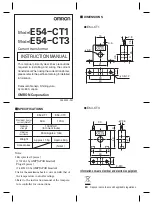TJA1055
All information provided in this document is subject to legal disclaimers.
© NXP B.V. 2013. All rights reserved.
Product data sheet
Rev. 5 — 6 December 2013
14 of 26
NXP Semiconductors
TJA1055
Enhanced fault-tolerant CAN transceiver
[1]
All parameters are guaranteed over the virtual junction temperature range by design, but only 100 % tested at T
amb
= 125
C for dies on
wafer level, and above this for cased products 100 % tested at T
amb
= 25
C, unless otherwise specified.
11. Dynamic characteristics
Pins RTH and RTL
R
sw(RTL)
switch-on resistance on
pin RTL
normal operating mode; switch-on
resistance between pin RTL and
V
CC
;
I
O
< 10 mA
-
40
100
R
sw(RTH)
switch-on resistance on
pin RTH
normal operating mode; switch-on
resistance between pin RTH and
ground;
I
O
< 10 mA
-
40
100
V
O(RTH)
output voltage on pin RTH low power modes; I
O
= 100
A
-
0.7
1.0
V
I
O(RTL)
output current on pin RTL low power modes; V
RTL
= 0 V
1.5
0.65
0.1
mA
I
pu(RTL)
pull-up current on pin RTL normal operating mode and
failures 4, 6 and 7
-
75
-
A
I
pd(RTH)
pull-down current on
pin RTH
normal operating mode and
failures 3 and 3a
-
75
-
A
Thermal shutdown
T
j(sd)
shutdown junction
temperature
160
175
190
C
Table 8.
Static characteristics
…continued
V
CC
= 4.75 V to 5.25 V; V
BAT
= 5.0 V to 40 V; V
STB
= V
CC
; T
vj
=
40
C to +150
C; all voltages are defined with respect to
ground; positive currents flow into the device; unless otherwise specified.
[1]
Symbol
Parameter
Conditions
Min
Typ
Max
Unit
Table 9.
Dynamic characteristics
V
CC
= 4.75 V to 5.25 V; V
BAT
= 5.0 V to 40 V; V
STB
= V
CC
; T
vj
=
40
C to +150
C;
R
CAN_L
= R
CAN_H
= 125
; C
CAN_L
=
C
CAN_H
= 1 nF
; all voltages are defined with respect to ground; unless otherwise specified.
Symbol
Parameter
Conditions
Min
Typ
Max Unit
t
t(reces-dom)
transition time for recessive to
dominant (on pins CANL and
CANH)
between 10 % and 90 %; see
and
0.2
-
-
s
t
t(dom-reces)
transition time for dominant to
recessive (on pins CANL and
CANH)
between 10 % and 90 %; see
and
0.2
-
-
s
t
PD(L)
propagation delay TXD (LOW) to
RXD (LOW)
no failures; see
to
-
-
1.5
s
all failures except CAN_L shorted to CAN_H;
see
-
-
1.9
s
failure 7, CAN_L shorted to CAN_H;
R
CAN_L
= 1 M
; see
-
-
1.9
s
t
PD(H)
propagation delay TXD (HIGH) to
RXD (HIGH)
no failures; see
to
-
-
1.5
s
all failures except CAN_L shorted to CAN_H;
see
-
-
1.9
s
failure 7, CAN_L shorted to CAN_H;
R
CAN_L
= 1 M
; see
-
-
1.9
s
t
d(sleep)
delay time to sleep
5
-
50
s
t
dis(TxD)
disable time of TxD permanent
dominant timer
normal operating mode; V
TXD
= 0 V
0.75 -
4
ms


















